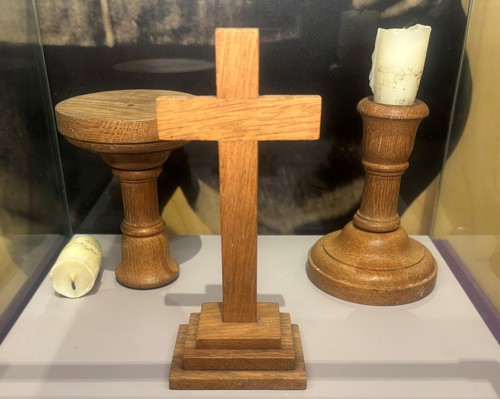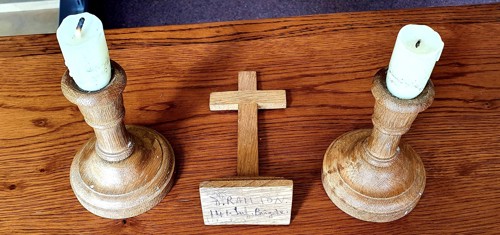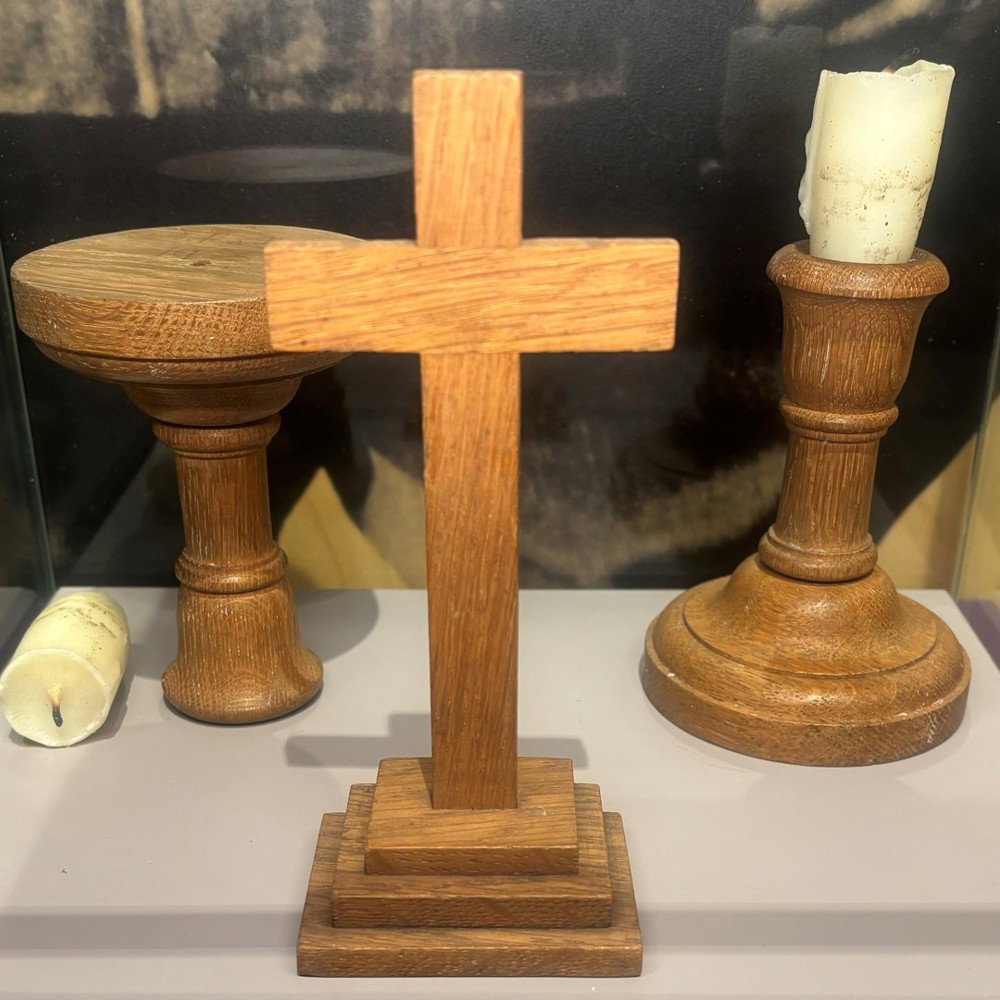Did you know that the Royal Army Chaplains’ Museum at Beckett Gate, holds particular connection to the nation’s annual act of Remembrance?


On display amidst the collections, protected in a glass case, stand two carved wooden candlesticks and a crucifix. They bare the handwritten inscription of ‘D. RAILTON 141 Inf. Brigade’.
Reverend David Railton, MC, was a First World War chaplain who served at battles that included High Wood, the Aisne and Passchendaele. He received the Military Cross for rescuing an officer and two men while under heavy fire on the Somme.
After seeing the grave of an unnamed soldier of the Black Watch near Armentières, he thought of repatriating the body of an unidentified comrade back to Great Britain. This act would represent all those that had fallen in battle, but who’s families at home had been unable to lay them to rest.
On Armistice Day 1920, David Railton's vision was realised. The coffin of the Unknown Warrior, covered by his own wartime Union flag, was laid to rest with full honours in Westminster Abbey. The story of David Railton and the Unknown Warrior can be read on the Westminster Abbey website (www).
Today, the wooden cross and two candlesticks carried by David Railton during his front-line service are part of the Royal Army Chaplains’ Museum collection dedicated to Remembrance.
Museum curator, David Blake explains further:
The Royal Army Chaplains’ Museum is open between 1.30pm and 5.00pm, Monday to Friday and at other times by arrangement. Entry is free.

